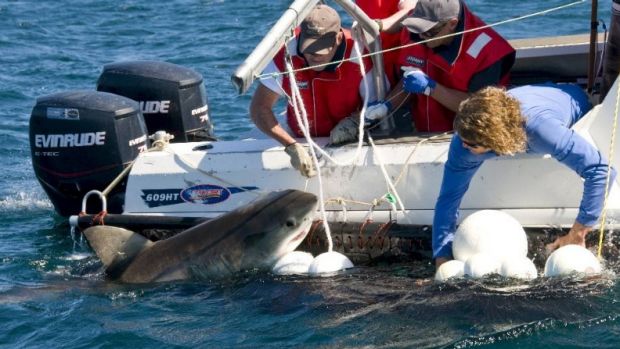Port Stephens' blue water wonderland isn't just popular with the tens of thousands of tourists who visit each summer. New research shows the estuary is inhabited with far more great white sharks than previously thought.
And many of them swim less than 100 metres away from oblivious holiday makers at places like Fly Point.
More iPad Videos
Shark spotted with drone
A shark spotted via a drone.
"This project has changed our whole view of how sharks behave in Port Stephens," marine scientist and lead researcher David Harasti said.
"We thought they stayed off Hawks Nest, but now we know they come right inside the estuary, right up to places like the Anchorage."

Dr Harasti said swimmers needed to be mindful of the risk in the summer months.
"While there have never been any shark attacks at places like Bennetts Beach, where we know there are lots of sharks, there have been two attacks inside the estuary – Winda Woppa in 2005 and at Jimmys Beach in 2011," he said.
"The water in Port Stephens is normally very clear, but when it gets dirty people should be cautious about swimming particularly around sunrise and sunset."
The joint CSIRO-Department of Primary Industries research project detected 20 of 34 tagged great white sharks, some up to 3.2 metres long, in the estuary between 2009 and 2014.

More non-tagged sharks would have also been in the estuary at the time.
One of the sharks was detected on 25 out of 42 consecutive days.
The majority of the sharks in the Port Stephens estuary were detected between October and January, with the largest number occurring in November.
No detections occurred between March and May.
"Juvenile white sharks used to area closer to the entrance than the rest of the estuary, with only one shark being detected in the western section of the eastern basin," the article, which was published in Marine Biology said.
Dr Harasti said the study had significant implications for understanding the shark habitat around Port Stephens, which has traditionally focused on Hawks Nest and Stockton.
"They have always been here, but this is the first time anyone has looked for them inside an estuary" he said.
He said he hoped the study would assist in managing risks associated with shark populations around Port Stephens.
"It will also improve our understanding of, and ability to manage, encounter risk with humans in these often heavily populated regions and widely used waterways, thereby providing a sound base to inform public safety policies," the journal article says.














